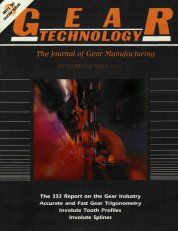On many occasions a reasonably approximate, but not exact, representation of an involute tooth profile is required. Applications include making drawings, especially at enlarged scale, and laser or EDM cutting of gears, molds, and dies used to produce gears. When numerical control (NC) techniques are to be used, a simple way to model an involute can make the NC programming task much easier.
